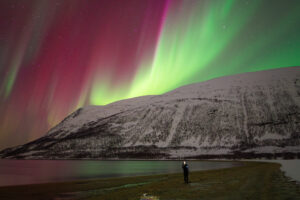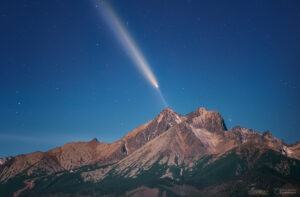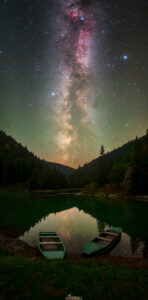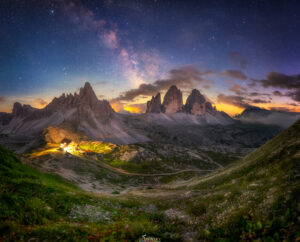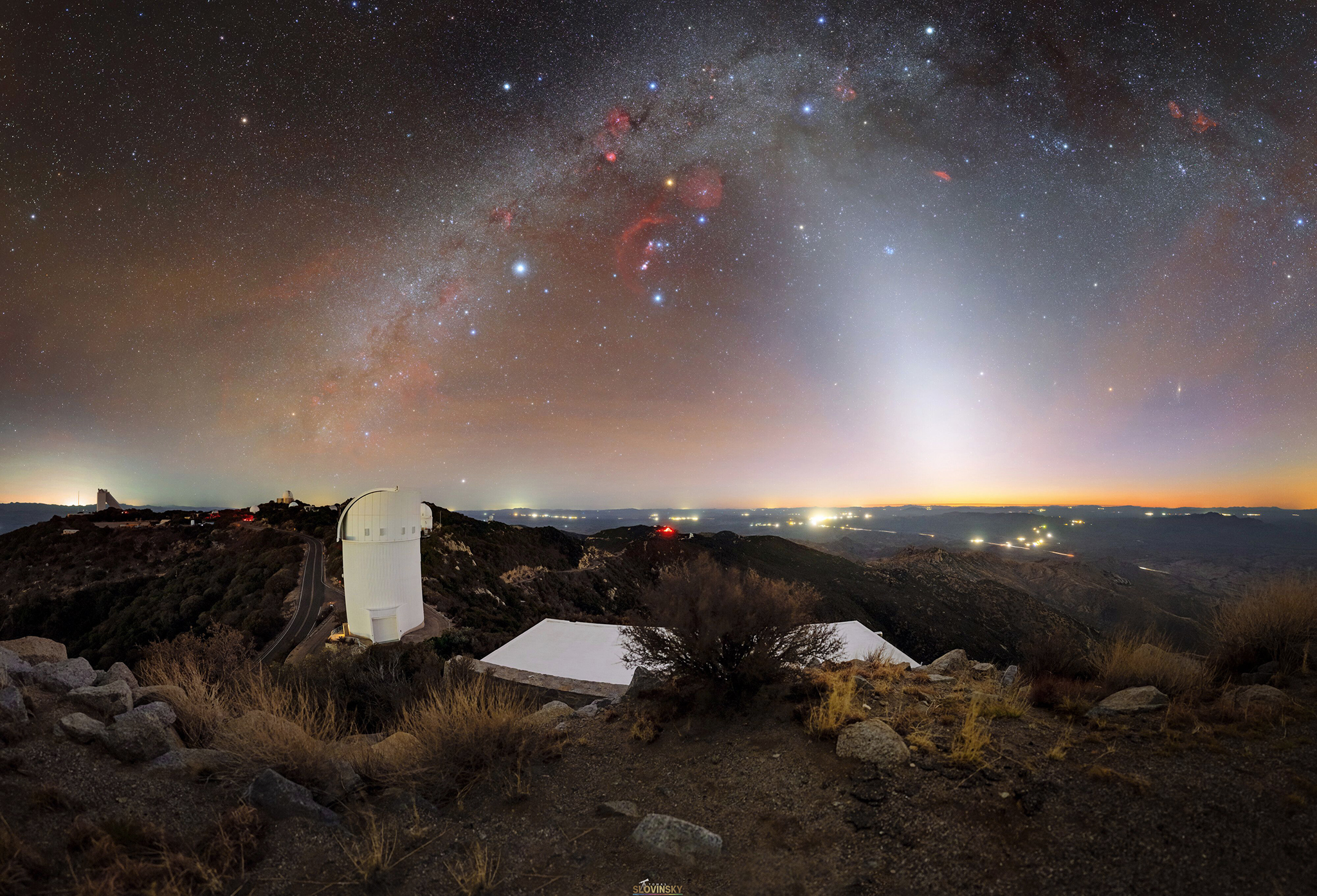
The dynamic coloring of the night sky at Kitt Peak National Observatory (KPNO), a Program of NSF’s NOIRLab, makes for a beautiful backdrop behind the UArizona Bok 2.3-meter Telescope. Distant city lights, cars, airglow, and the arc of the Milky Way all add to the variety of colors. Zodiacal light emanating from the horizon intersects with the Milky Way on the right hand side of the image. One orange star at the center of this image stands out amongst the rest. This is the red supergiant Betelgeuse, a star that marks a ‘shoulder’ of the hunter constellation, Orion. Being a relatively old star, Betelgeuse glows a cool red compared to its hot, bright blue neighbors. Despite this, it is usually the 10th brightest star in the night sky. More compellingly, Betelgeuse is massive — so massive that its diameter is more than 750 times that as the Sun. This makes it the largest star visible to the naked eye. Betelgeuse received some press in 2019 when a small explosion on its surface was observed, leading to speculation that a supernova was imminent. However, in 2021 scientists determined that the dying star won’t be exploding for at least another 100,000 years. This photo was taken as part of the recent NOIRLab 2022 Photo Expedition to all the NOIRLab sites.
One orange star at the center of this image stands out amongst the rest. This is the red supergiant Betelgeuse, a star that marks a ‘shoulder’ of the hunter constellation, Orion. Being a relatively old star, Betelgeuse glows a cool red compared to its hot, bright blue neighbors. Despite this, it is usually the 10th brightest star in the night sky. More compellingly, Betelgeuse is massive — so massive that its diameter is more than 750 times that of the Sun.

